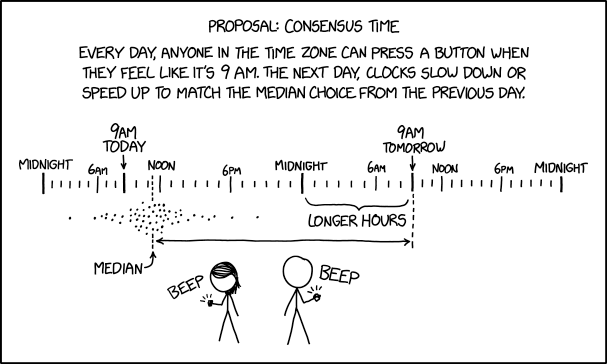If you haven't already, read Joseph's post "Free speech for the first speaker," a dismantling of the New York Times recent editorial on cancel culture. He does an excellent job addressing the logical flaws. Personally, I couldn't get past the stomach-turning hypocrisy.
Actual examples of cancellation are rare, vanishingly so when the opinions are on the right. The conservative movement always made sure that those pushing the correct views worked with a net. Between sinecures, sympathetic (and often heavily subsidized) publications, right wing media and the occasional discreet bulk purchase of a “New York Times best-selling” book, journalists and pundits who stand up against the liberal establishment know they will never walk alone. No one who still routinely appears on Fox News or has cashed in big on Substack has been in any meaningful way canceled.
If you’re looking for a real example of someone with what had been a wide-reaching voice being effectively forced out of the discourse for expressing controversial opinions, the first name to come to my mind would be Gawker.
In case you’ve forgotten, Gawker was an angry, bomb throwing, afflict-the-comfortable family of blogs. They violently rejected bothsiderism and the view from nowhere. Instead, they were completely open with their biases, especially a hatred and disgust with tech messiahs, obscenely rich people, and the establishment press.
This post [dead link but you might be able to find it on the Internet Archive]by Ryan Tate originally spotted by Andrew Gelman and the subject of one of our posts, shows a perfect example of a Gawker 3 for 3:
If you want Facebook to spend millions of dollars hiring you, it helps to be a talented engineer, as the New York Times today [18 May 2011] suggests. But it also helps to carouse with Facebook honchos, invite them to your dad's Mediterranean party palace, and get them introduced to your father's venture capital pals, like Sam Lessin did.Lessin is the poster boy for today's Times story on Facebook "talent acquisitions." Facebook spent several million dollars to buy Lessin's drop.io, only to shut it down and put Lessin to work on internal projects. To the Times, Lessin is an example of how "the best talent" fetches tons of money these days. "Engineers are worth half a million to one million," a Facebook executive told the paper.
We'll let you in on a few things the Times left out: Lessin is not an engineer, but a Harvard social studies major and a former Bain consultant. His file-sharing startup drop.io was an also-ran competitor to the much more popular Dropbox, and was funded by a chum from Lessin's very rich childhood. Lessin's wealthy investment banker dad provided Facebook founder Mark Zuckerberg crucial access to venture capitalists in Facebook's early days. And Lessin had made a habit of wining and dining with Facebook executives for years before he finally scored a deal, including at a famous party he threw at his father's vacation home in Cyprus with girlfriend and Wall Street Journal tech reporter Jessica Vascellaro. (Lessin is well connected in media, too.) . . .
That attitude combined with sharp, funny writing and a willingness to tell interesting, important stories that the rest of the press were ignoring made Gawker a remarkable success story. It also unsurprisingly pissed off tech messiahs, obscenely rich people, and the establishment press
The editors did believe in pushing the envelope, especially when the target were rich white men doing despicable things. They were also reckless and self-destructive and had a huge problem with authority. Combine that with a desire to be provocative to the point of shocking, and you guaranteed that any enemy with deep pockets and a deeper grudge would have plenty of ammunition.
It was right wing billionaire and cartoon villain Peter Thiel who finally came after them. Thiel was a member of the PayPal mafia along with Elon Musk. According to a mutual acquaintance "Musk thinks Peter is a sociopath, and Peter thinks Musk is a fraud and a braggart" showing that for all their other flaws, both men are reasonably good judges of character.
Thiel’s politics are not central to this story, but it is worth noting that he’s arguably the biggest Trump supporter in the tech industry (now even more so) and is also on the record as believing that it was a mistake to give women the vote.
Rather than take open action, Thiel went the coward's route and secretly bankrolled a lawsuit then engineered it so that Gawker was forced into bankruptcy. When word leaked out of his involvement, he showed no shame (because shame’s not really a big emotion for sociopaths). Instead, he immediately started depicting himself as a courageous defender of privacy (which was pretty ripe coming from someone who'd made a billion off of Facebook, but remember what we said about shame), and he was given the world’s best piece of journalistic real estate to do it from.
Thiel’s NYT opinion piece was as bad as you would expect -- self-serving and highly distorted – but even if it had been objective and honest, the very fact that the paper handed him the biggest gift it had to bestow meant that the gray lady was actively supporting the billionaire who set out, not just to punish, but to silence a publication that criticized him and his circle.
Have there been excesses on the left? Progressive intolerance of other ideas? Instances of free expression of ideas being squelched? Of course. It is by no means the cultural epidemic we’ve been warned about, but the right does not have a monopoly on assholes.
There is room for an intelligent and measured conversation about how “constraints on speech can turn into arbitrary rules with disproportionate consequences,” but this is one topic on which the New York Times should keep its goddamn mouth shut.
